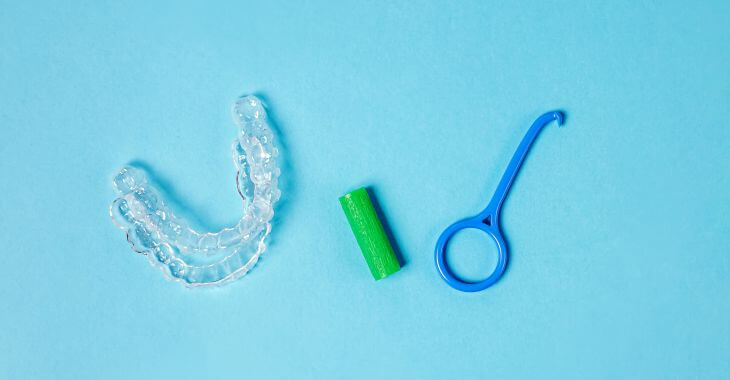Is Alveoloplasty Necessary for Dentures?

Getting dentures involves more than just replacing missing teeth. The shape and health of your jawbone play a critical role in the success and comfort of your new smile. If your dentist recommends a procedure called alveoloplasty, you may be wondering — is alveoloplasty necessary for dentures?
What Is Alveoloplasty?
Let’s start with the basics — what is alveoloplasty? Alveoloplasty is a minor oral surgery that involves reshaping and smoothing the jawbone, specifically the alveolar ridge where your teeth once sat. It’s often done after extractions to create an even surface that can better support dentures.
Why Bone Shape Matters for Dentures
After a tooth is extracted, the jawbone that supported it doesn’t just stay the same. It begins to shrink and remodel, a process known as bone resorption. In fact, studies show that up to 25% of bone width is lost in the first year after tooth loss. Uneven or jagged bone surfaces can lead to:
- Poor denture fit
- Painful pressure points
- Ulcers or sore spots
- Rocking or loose dentures
This is where alveoloplasty makes a difference.
When Is Alveoloplasty Performed?
Alveoloplasty may be done:
- At the time of tooth extraction
- After healing from prior extractions
- In preparation for a new denture
- Prior to dental implant placement
It is especially helpful if you’re having multiple extractions or already have uneven or sharp bony ridges.
Is Alveoloplasty Necessary for Dentures?
So, is alveoloplasty necessary for dentures in all cases? Not always, but when it is recommended, it’s for a good reason. You may need alveoloplasty if:
- Your jawbone has sharp ridges or uneven healing
- Multiple teeth are being removed at once
- Your previous denture didn’t fit well
- You had gum disease or bone damage
- You’re getting a full set of dentures
It is a proactive way to ensure your new denture fits right the first time without unnecessary discomfort and complications.
How the Procedure Works
The procedure is usually done in a dental or oral surgery office under local anesthesia. Typical steps include:
- Numbing the area
- Making small incisions to expose bone
- Filing or trimming uneven areas
- Smoothing sharp ridges
- Closing the gum tissue with sutures
It typically takes 30 to 60 minutes, depending on the number of areas involved.
Recovery and Aftercare
Most patients recover quickly. You may have mild swelling, soreness, or slight bleeding for a few days. Tips your dentist may recommend for healing include:
- Stick to soft foods
- Avoid smoking or alcohol
- Rinse gently with warm saltwater
- Follow pain medication instructions
- Keep follow-up appointments
Healing usually takes 1–2 weeks, though it may take a little longer before impressions for dentures can be made.
Benefits of Alveoloplasty for Denture Wearers
If you are considering whether this procedure is worth it, here are some of the key benefits:
- Improved denture fit: Smooth bone means better alignment
- Less irritation: Reduces the risk of pressure sores
- Fewer adjustments: Saves time and money later
- Longer-lasting dentures: Even support = longer wear
- Greater comfort: Easier eating, speaking, and smiling
A well-shaped jawbone creates the foundation for a stable, functional denture.
What Happens If I Skip It?
Skipping alveoloplasty when it’s needed can lead to:
- Loose, ill-fitting dentures
- Repeated denture relining or rebasing
- Gum irritation and chronic sore spots
- Frustration with daily wear
- Shorter lifespan of the dentures
It is often more cost-effective to do the procedure upfront than to fix denture problems later.
Will It Delay Getting My Dentures?
Sometimes yes—but for good reason. Your dentist may wait for the surgical site to fully heal before taking impressions for your denture. A short delay results in a much better outcome, and your dentures are more likely to fit comfortably from day one.
Alveoloplasty and Dental Implants
Alveoloplasty isn’t just for denture patients. It’s also commonly done before placing dental implants, especially when preparing the ridge to support implant-supported dentures. An even jawline ensures precise implant placement and better long-term success.
What Does Alveoloplasty Cost?
Costs vary depending on your location, the number of areas being treated, and whether it’s combined with extractions. On average, alveoloplasty may cost $200–$600 per quadrant. Good news: If it’s medically necessary, many dental insurance plans may cover all or part of the procedure.
When to Talk to Your Dentist
If you are planning for dentures or already struggling with a poor fit, it’s time to ask your provider what is alveoloplasty and whether it is right for you. X-rays and a visual exam will help your dentist determine if bone reshaping is needed before creating your denture.
So, is alveoloplasty necessary for dentures? If your jawbone is uneven or compromised, the answer is likely yes. It is a small step that offers big, long-term benefits—better fit, greater comfort, and less hassle.

Dentures are an investment in your health and confidence. Alveoloplasty helps protect that investment. Talk to your dentist about whether alveoloplasty is recommended in your case.
The information provided on this website, including text, graphics, images, and other materials, is intended solely for informational purposes and should not be used as a substitute for professional medical advice, diagnosis, or treatment.




)